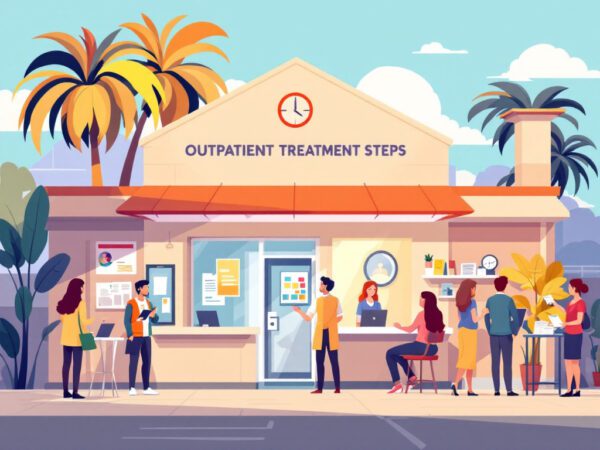The Essence of Effective Treatment
Psychotherapy for BPD
When we discuss bpd outpatient treatment, the cornerstone of effective recovery is often psychotherapy, commonly referred to as talk therapy. Psychotherapy is particularly essential for individuals with Borderline Personality Disorder (BPD), as it addresses the emotional and behavioral challenges associated with this condition. One of the most recommended therapies is Dialectical Behavior Therapy (DBT), which has been endorsed by the National Institute for Health and Care Excellence (NICE) for women with a history of self-harm and suicidal behavior (NHS).
Other therapeutic approaches may also be beneficial, and individuals are encouraged to seek a treatment plan that fits their unique needs. The main focus of these therapies is to help individuals understand and manage their emotions, build healthier relationships, and develop coping strategies.
Incorporating Medication
While psychotherapy is a vital component of BPD treatment, incorporating medication can also play a significant role in recovery. Although the Food and Drug Administration (FDA) has not approved specific drugs solely for BPD, certain medications can help alleviate symptoms experienced by individuals with this disorder. These medications may target associated conditions such as depression, impulsiveness, aggression, or anxiety.
It is essential to work closely with a healthcare provider to determine the most beneficial and safe medication regimen for each individual. Medications can be effective in reducing emotional intensity and improving the overall quality of life when used in conjunction with psychotherapy.
| Treatment Component | Description |
|---|---|
| Psychotherapy | Talk therapy, including DBT, addresses emotional and behavioral challenges of BPD. |
| Medication | Prescription drugs may alleviate symptoms associated with BPD and its co-occurring conditions. |
By understanding the essence of effective treatment through psychotherapy and the incorporation of medication, we can pave the way toward a holistic approach for recovery in individuals with BPD. It’s crucial to stay informed about the resources and options available for achieving optimal outcomes. For further details on outpatient options, we encourage you to explore our sections on outpatient addiction treatment, intensive outpatient program, and other relevant programs designed to help individuals in their recovery journey.
Specialized Treatment Approaches
When we talk about the effective treatment of Borderline Personality Disorder (BPD), two specialized approaches stand out: Dialectical Behavior Therapy (DBT) and Schema Therapy (ST). Both have been shown to provide significant benefits in managing BPD symptoms and improving overall well-being.
Dialectical Behavior Therapy (DBT)
Dialectical Behavior Therapy (DBT) is often considered the gold standard for treating individuals with BPD. It is recommended by the National Institute for Health and Care Excellence (NICE) as the primary treatment for women who exhibit self-harming behaviors and suicidal tendencies (NHS).
DBT incorporates various techniques, including mindfulness, distress tolerance, emotion regulation, and interpersonal effectiveness. The goal of DBT is to help individuals build a life worth living by learning to manage their emotions and improve their relationships.
Moreover, DBT has proven effective in treating co-occurring disorders such as substance use disorders, mood disorders, and post-traumatic stress disorder, making it a versatile option for comprehensive care (NCBI).
| Key Components of DBT | Description |
|---|---|
| Mindfulness | Practicing being present in the moment |
| Distress Tolerance | Building skills to manage emotional distress |
| Emotion Regulation | Learning to identify and adjust emotional responses |
| Interpersonal Effectiveness | Enhancing communication skills and building healthy relationships |
Schema Therapy (ST)
Schema Therapy (ST) offers another valuable approach for treating BPD. It aims to identify and change deeply ingrained patterns or “schemas” that can lead to emotional difficulties and maladaptive behaviors.
ST combines elements from cognitive-behavioral therapy and attachment theory, focusing on the early life experiences that shape an individual’s emotional responses and thought patterns. By addressing these core issues, ST helps individuals achieve healthier, more adaptive coping mechanisms.
Research has shown that both DBT and ST can effectively reduce BPD symptoms and associated societal costs, enhancing quality of life and psychosocial functioning (NCBI).
| Key Components of Schema Therapy | Description |
|---|---|
| Schema Identification | Recognizing maladaptive schemas from early experiences |
| Emotional Awareness | Understanding and labeling emotions |
| Cognitive Restructuring | Challenging negative thought patterns |
| Behavioral Change | Developing healthier coping strategies |
By incorporating these specialized therapies into our BPD outpatient treatment plans, we can help individuals navigate their recovery journey more effectively. For those seeking support, we encourage exploring our outpatient addiction treatment options, as they may align well with the principles of DBT and ST.
Evidence-Based Treatment Strategies
In our pursuit of effective care for individuals experiencing Borderline Personality Disorder (BPD), we recognize the importance of evidence-based treatment strategies. Two prominent therapies utilized in outpatient programs are Dialectical Behavior Therapy (DBT) and Schema Therapy (ST), each with its own strengths in addressing the complexities of BPD.
DBT Effectiveness
Dialectical Behavior Therapy (DBT) is recognized as the first-line treatment for individuals with BPD, particularly those with self-harming behaviors and suicidal tendencies. The National Institute for Health and Care Excellence (NICE) has recommended DBT due to its proven effectiveness in fostering emotional regulation and coping skills (NHS).
DBT integrates cognitive-behavioral techniques with mindfulness practices, allowing individuals to develop healthier emotional responses. Studies have shown that DBT can lead to significant reductions in self-harm and suicidal behavior, enhancing overall quality of life.
Utilizing a structured approach, DBT typically includes individual therapy, group skills training, and phone coaching to provide continuous support. A meta-analysis indicates that DBT outperforms treatment as usual in decreasing self-harming behaviors and hospitalizations, making it a highly effective choice for outpatient addiction treatment.
| Outcome Measure | Effectiveness (DBT) |
|---|---|
| Reduction in self-harm | Significant |
| Decrease in suicidal ideation | Substantial |
| Improvement in emotional regulation | Notable |
ST in BPD Treatment
Schema Therapy (ST) is another promising approach for treating BPD, focusing on identifying and altering deeply ingrained patterns or “schemas” that influence behavior and relationships. ST typically combines cognitive and experiential techniques, making it suitable for individuals who may not respond well to traditional therapies.
Research indicates that Schema Therapy can address chronic patterns of dysfunction and improve psychological well-being. While ST may not have the same level of empirical support as DBT, it has shown efficacy in reducing symptoms of depression, anxiety, and emotional dysregulation in clients with BPD.
A longitudinal study found that patients receiving ST displayed improved emotional stability and better interpersonal relationships. For those struggling with heavy patterns of maladaptive behavior, ST offers a compassionate framework for change.
| Outcome Measure | Effectiveness (ST) |
|---|---|
| Improvement in interpersonal relationships | Positive |
| Reduction in emotional dysregulation | Meaningful |
| Enhanced coping strategies | Confirmed |
Incorporating these two evidence-based strategies — DBT and ST — within our outpatient programs, we prioritize a holistic approach to recovery. By understanding the effectiveness of these therapies, we empower individuals to make informed decisions about their treatment pathways. For more insights into our intensive outpatient program, please explore additional resources.
Tailored Therapy for BPD
Choosing the right therapeutic approach is essential for effective bpd outpatient treatment and recovery from borderline personality disorder (BPD). Below, we explore two prominent treatment modalities: Dialectical Behavior Therapy (DBT) and Schema Therapy (ST).
Key Elements of DBT
Dialectical Behavior Therapy (DBT) is a structured approach recommended by the National Institute for Health and Care Excellence (NICE) for women with BPD who have a history of self-harming and suicidal behavior. DBT comprises four main components:
| DBT Component | Description |
|---|---|
| Skills Training Group | Participants learn behavioral skills to manage symptoms of BPD and improve emotional regulation. |
| Individual Psychotherapy | One-on-one therapy focuses on problem-solving and skill implementation in daily life. |
| Telephone Consultation | Clients can access their therapists for support in real-time, particularly during crises. |
| Therapist Consultation Team | A group where DBT practitioners discuss case management and treatment strategies for clients. |
DBT aims to equip individuals with skills for stress management, emotion regulation, mindfulness, and interpersonal effectiveness. This multifaceted approach addresses the complex symptoms associated with BPD, including chaotic relationships and impulsivity. Additionally, DBT has shown efficacy in treating other conditions such as substance use disorders and posttraumatic stress disorder (NCBI).
Components of Schema Therapy
Schema Therapy (ST), developed by Jeffrey Young, focuses on identifying and modifying maladaptive schemas that often originate from adverse childhood experiences. ST emphasizes emotional distress and aims to instill healthier coping mechanisms. Key components of Schema Therapy include:
| ST Component | Description |
|---|---|
| Cognitive Interventions | Identifying and challenging negative thought patterns that contribute to maladaptive behaviors. |
| Experiential Techniques | Engaging clients in emotional processing to help them understand their core needs. |
| Behavioral Strategies | Implementing new behaviors that align with healing and personal growth. |
| Limited Reparenting | Therapists act as ‘limited reparenters’ to provide emotional support and guidance. |
Schema Therapy comprehensively addresses the foundational issues of BPD by incorporating cognitive, emotional, and behavioral interventions. This approach allows individuals to reframe their experiences and develop healthier relationships with themselves and others.
By understanding the tailored therapy options available for BPD, we can confidently seek effective treatment solutions that cater to individual needs. Whether you or a loved one are considering outpatient addiction treatment or exploring mental health options, both DBT and ST provide valuable frameworks for recovery.
Achieving Recovery Goals
Managing BPD Symptoms
Managing symptoms of Borderline Personality Disorder (BPD) is a critical component of recovery. Effective treatments, including psychotherapy, can improve psychosocial functioning and reduce self-harm and depressive symptoms (NCBI). Incorporating a structured approach, such as Dialectical Behavior Therapy (DBT) and Schema Therapy (ST), has been shown to significantly decrease BPD symptoms and enhance overall quality of life.
| Treatment | Expected Outcomes |
|---|---|
| Psychotherapy | Improved psychosocial functioning, reduced symptoms of BPD |
| Dialectical Behavior Therapy | Decreased symptoms, better emotional regulation |
| Schema Therapy | Improved quality of life, reduction in BPD criteria |
Our goal is to support individuals through these therapeutic avenues, working closely with licensed professionals to ensure personalized care tailored to their unique needs.
Collaborating for Success
Collaboration with mental health professionals is vital for sustained recovery from BPD. This partnership creates a support network that not only facilitates the management of symptoms but also encourages overall growth. Evidence indicates that when patients engage with effective treatments like DBT and ST, they demonstrate improved outcomes and remission rates around 60% (NCBI).
Key collaborations can include:
- Therapist Engagement: Regular sessions with qualified therapists to ensure adherence to treatment plans.
- Family Involvement: Involving family members in therapy sessions can help create supportive environments for the patient.
- Support Groups: Participating in peer-led groups can provide additional support and understanding.
The recovery process is ongoing, with many individuals showing improvement over time, although some may continue to encounter challenges. This underscores the importance of having an experienced mental health team to navigate the complexities of BPD. Continuous support, as delivered through our outpatient addiction treatment services, can empower individuals to achieve their recovery goals effectively.
Ensuring Safe and Effective Care
Hospitalization Considerations
For individuals with borderline personality disorder (BPD), there are times when hospitalization becomes necessary to ensure safety and address critical mental health concerns. Hospitalization in a psychiatric facility can provide a controlled environment where professionals monitor and support individuals who may be at risk for self-harm or have suicidal thoughts. This step is crucial to promote stabilization and prevent harm (Mayo Clinic).
Although many patients with BPD tend to use outpatient treatment consistently, there are cases where inpatient care is recommended for short-term intensive support. It is important to understand that inpatient treatment is not the primary choice for everyone with BPD and is used sporadically by a smaller subset of individuals. We should stay informed about the need for hospitalization particularly when safety concerns arise.
| Consideration | Description |
|---|---|
| Safety | Hospitalization can prevent self-harm and address suicidal ideation. |
| Duration | Generally a short-term solution to stabilize an individual. |
| Treatment Environment | Provides structured care in a monitored setting. |
Progress and Long-term Outcomes
Research indicates that individuals with borderline personality disorder exhibit promising long-term outcomes when engaged in consistent treatment. Studies show that about 60% of patients achieve remission from BPD psychopathology, although some may still face challenges with psychosocial functioning.
Long-term improvements often stem from a combination of outpatient and inpatient programs, allowing for tailored support through different stages of recovery. For example, outpatient therapy can significantly reduce symptoms like depression and self-harming behaviors over time. Maintaining a regular connection with support groups, therapy, and medication management is key to sustaining these positive changes.
For those considering the best options for themselves or loved ones in need of BPD outpatient treatment, ongoing engagement in outpatient programs and possible collaborations with intensive outpatient programs can facilitate a smoother recovery. Prioritizing a comprehensive approach that includes therapy, medication management, and effective case management is essential to ensure lasting recovery and overall well-being.















